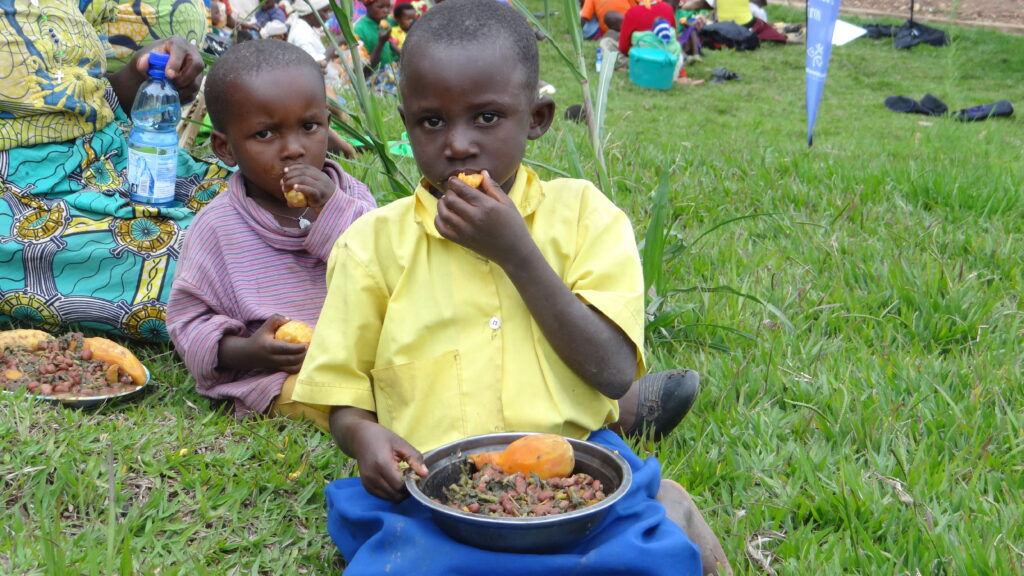This piece first appeared as a guest commentary on the website of The Chicago Council on Global Affairs.
By Mercy Lung’aho
Given its impressive track record over the last 20 years, Rwanda has rightly been considered a model for reducing poverty and hunger in Africa. Between 1990 and 2015, hunger was reduced by almost half. Yet leaders and researchers are still confronted with a puzzling fact: despite higher crop yields and increasing incomes, nutrition is not improving.
For example, in Rwanda’s northern volcanic areas—the country’s bread basket region—childhood stunting levels are unacceptably high. Why is it that, in one of the continent’s most productive agricultural regions, where households consider themselves food secure, we still see up to half of children stunted due to malnutrition?
One of the biggest issues is that nutrition, health, and agriculture experts have not always worked together. To a large extent, we’re still not. A global study on maternal and child nutrition published in the Lancet in 2013 found that focusing on health solutions— such as food supplements —would only help 20 percent of those affected. That’s simply not acceptable. As an expert working in nutrition in the agricultural sector, I realize that much of the responsibility falls on us. We need to work with other sectors and invest in agricultural research and projects that deliberately seek better nutrition as an outcome.
For decades, the agricultural sector focused on producing more food. The rationale? More calorieintake equals better nutritional outcomes. We could not have been more wrong. Children may have their bellies full—but they are far from healthy. In fact, a recent analysis of nutrition in Rwanda indicated that individuals can be obese and malnourished at the same time—so we cannot equate more food with a healthy population.
To better address malnutrition in Rwanda, and by extension in Africa, agriculture must nourish communities in three ways.
First, the agricultural and health sectors must work together and agree on what constitutes a healthy diet in our context. Then, we can improve the whole food system to produce more diverse foods that meet the nutrition needs of our population.
Senegal can provide us with an excellent example of how this works. In the country’s Yaanjeende agriculture program, nutrition, health, and agricultural experts first analyzed health priorities in specific communities. They realized that anemia was a concern and used that information to promote iron rich millet that would address the particular health problems they identified, leading to better nutrition among women and children.
Second: we need to increase farmer incomes over the long term. A study in Rwanda found that improving nutrition is linked closely with reducing poverty among farming families. To achieve this, farmers need financing for better seed and fertilizer, training on new agricultural techniques, and better access to markets to maximize profits from harvest sales. In addition, farmers need crop and livestock insurance to protect their crops and animals during drought and against new pests and diseases. Right now, the ongoing infestation of armyworms in Africa is destroying food and incomes: farmers are often left helpless without any social protection in place.
And last but not least: agriculture can influence nutrition by empowering women to better manage their time and energy expenditure. Agriculture in Africa is backbreaking and time consuming, and women do their share of the work. When women are employed in agriculture during their pregnancies or when they are breastfeeding, the drudgery affects their health and ability to care for their children.
Across Africa, communities thrive when mothers can put better meals on the table and adequately care for themselves and their children. To improve nutrition, agriculture must focus on getting better low-cost, time-saving technologies to communities. For example, in Uganda, mulching eliminates weeds, reducing the workload and time that women need to spend on weeding without harming their livelihoods. In Nigeria, simple motorized weeders have reduced the burden on cassava farmers and created job opportunities for the youth.
In 2015, the UN Sustainable Development Goals included a commitment to end malnutrition by 2030 and many are heeding the call. For example, Rwanda has a short-term goal of reducing the prevalence of child stunting to 18 percent by next year. The question is, what is the fastest route to success? In Africa, it’s clear that the farmers who produce our food—and whose families frequently are among the most vulnerable to suffering malnutrition—should be focal point of an integrated effort to cultivate healthy communities. While health experts are essential for tracking malnutrition, the cure can be found in funding effective agriculture programs that enable our farmers to produce a wider assortment of nutritious foods and profit from their hard work.
The views expressed in this article are the sole responsibility of the author and do not necessarily reflect the position of the Chicago Council on Global Affairs. References to specific non-profit, private, or government entities are not an endorsement.
